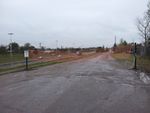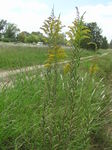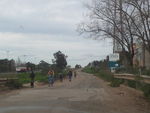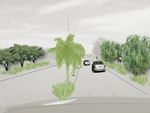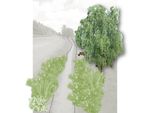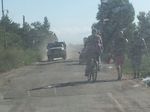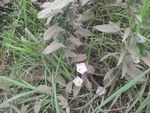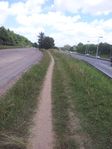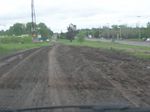Planting Design 2013 Working Group 23 - Case Study C: Difference between revisions
No edit summary |
No edit summary |
||
| Line 95: | Line 95: | ||
<gallery caption="Image Gallery" widths="150px" heights="150px" perrow="4"> | <gallery caption="Image Gallery" widths="150px" heights="150px" perrow="4"> | ||
Image: | Image:Dust-vechicules-people.jpg| Cargo vehicules, particular cars and people sharing the same road | ||
Image: | Image:Dust-flora.jpg| Photosynthesis is reduced due to dust in leaves | ||
Image: | Image:Footpath-spontaneous-Highway-on-the-right.jpg |Footpath-spontaneous. Highway on the right | ||
Image: | Image:Mud.jpg| After rains it is very difficult to use this road and it is closed | ||
</gallery> | </gallery> | ||
Revision as of 15:58, 23 November 2013
---> back to group page working group 23
Please add the title of your case study here, adjust the map coordinates and replace the moa image with a characteristic image of your site
A small space to recover in Hudson
| Name | A small space to recover in Hudson | |
| Location | Guillermo Hudson, Buenos Aires | |
| Country | Argentina | |
| Authors | Gisela De Santo | |

| ||
|
| ||
Rationale: Why is this case interesting?
Please give a short introduction to the site you have selected (not more than 150 words)
- Why did you select it?
- Is it exemplary for a specific theme or a problem?
- In how far does it relate to your life?
New real estate developments of the last 10 years were generating population growth and needs in the area of Guillermo Hudson. This sub-urban area is 30 km from Buenos Aires City, linked by Buenos Aires-La plata highway. In particular an area (about 3,2 km long and 32 meters wide) has a non paved road parallel to the highway. Spontaneous flora grows due to poor maintenance. Free portions of the space have trees. Noises and pollution are important issues. It became an area for different, spontaneous and simultaneous uses without organization of space. Activities include: people performing aerobic training, walking, bicycling, coexisting with cars and cargo vehicles. The road is closed when it rains. Garbage is dumped at the site and remains there for months. I live near here and I transit this place every day wondering why it is not a better quality and safe place. The area has a high potential to be organized in aspects like functionality, pleasure, safeness and recovery of a natural green landscape.
Author's perspective
From which professional background/perspective are your documenting this case?
Landscape and/or urban context of your case
- Biogeography, cultural features, overall character, history and dynamics
- Illustration: Map; sketches; short descriptive analyses
Analytical drawings
Please add four analytical sketches/drawings (or montages/schemes) of your case and take the following aspects into account:
- natural dynamic versus cultural framework - in how far do these two forces come together in your case?
- dynamic through the year (you may imagine how the site looks in spring and summer, maybe you also remember it)
- highlight potentials and problems
- Analytical Drawings
Projective drawings
- Please add four projective sketches/drawings (or montages/schemes) for your case and take the following aspects into account:
- How would you like this case to change in the near future? (in 1-2 years)
- And how could it look like in 10-15 years?
I wish to see a different place as soon as possible. A place more enjoyable for people and safe also. Paved road is a must for people displacement going to work, training and vehicles of neighbourhood that need this road to reach highway , their homes and other places (like the office centre and also an school).
Respect the footpath that people spontaneously created. It is a way to say ¨this place was designed by you also and you are part of it¨
Also it is an opportunity to revalue nice local flora using trees like Salix, Erytrina crista galli, Blepharocalyx salcifolius, Schinus Molle, Tacoma Stans, Celtis Tala, bushes like feijoa sellowiana,calliandra tweedii, herbaceus like cortadeira sellowana, salvias and palms like Syagrus rosmarinifolia.
- Projective Drawings
- Yourfilename3.jpg
projective drawing 3
- Yourfilename4.jpg
projective drawing 4
Summary and conclusion
Please summarize your case and give arguments for your projective design (approx 150 words).
Image Gallery
You may add a series of images/photos in addition to the sketches/drawings
- Image Gallery
References
* Please make sure that you give proper references of all external resources used.
* Do not use images of which you do not hold the copyright.
* Please add internet links to other resources if necessary.
About categories: You can add more categories with this tag: "", add your categories
